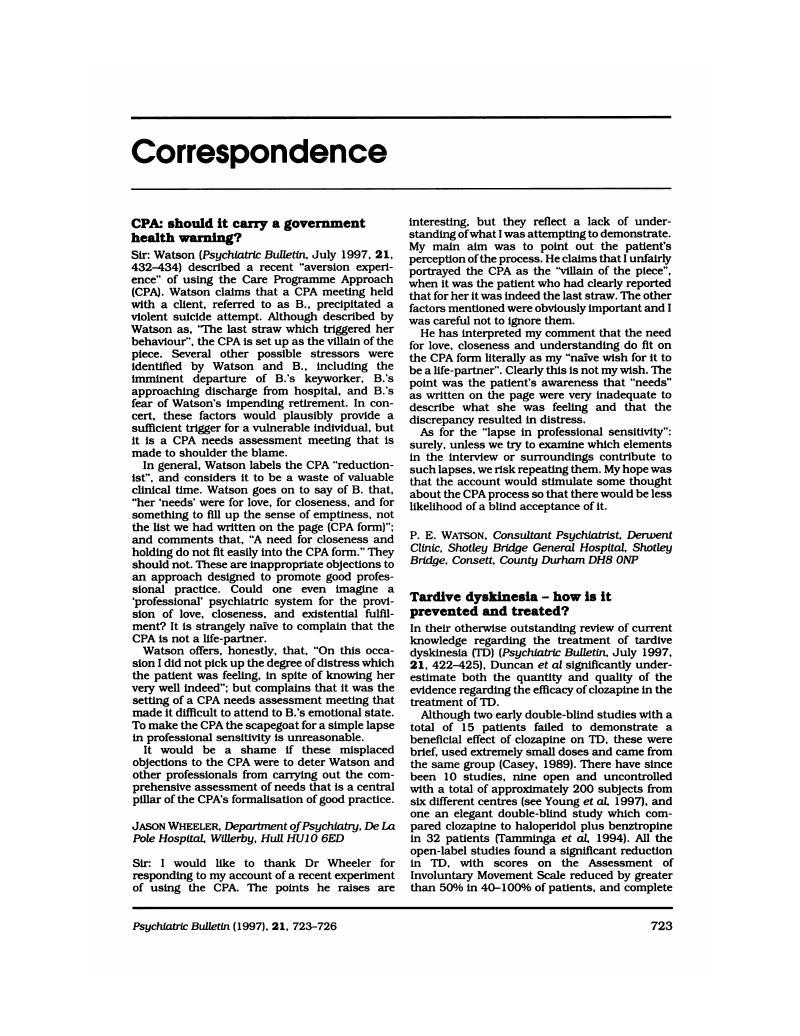No CrossRef data available.
Article contents
Tardive dyskinesia – how is it prevented and treated?
Published online by Cambridge University Press: 02 January 2018
Abstract
An abstract is not available for this content so a preview has been provided. As you have access to this content, a full PDF is available via the ‘Save PDF’ action button.

- Type
- Correspondence
- Information
- Creative Commons
- This is an Open Access article, distributed under the terms of the Creative Commons Attribution (CC-BY) license (http://creativecommons.org/licenses/by/4.0/), which permits unrestricted re-use, distribution, and reproduction in any medium, provided the original work is properly cited.
- Copyright
- Copyright © 1997 The Royal College of Psychiatrists
References
Casey, D. E. (1989) Clozapine: neuroleptic-induced EPS and tardive dyskinesa. Psychopharmacology, 99, S47–S53.CrossRefGoogle Scholar
Tamminga, C. A., Thaker, G. K., Moran, M., et al (1994) Clozapine in tardive dyskinesia: observations from human and animal model studies. Journal of Clinical Psychiatry, 55 (suppl B), 102–106.Google ScholarPubMed
Young, C. R., Longhurst, J. G., Bowers, M. B., et al (1997) The expanding indications for clozapine. Journal of Clinical and Experimental Psychopharmacology, 5, 1–20.Google ScholarPubMed



eLetters
No eLetters have been published for this article.